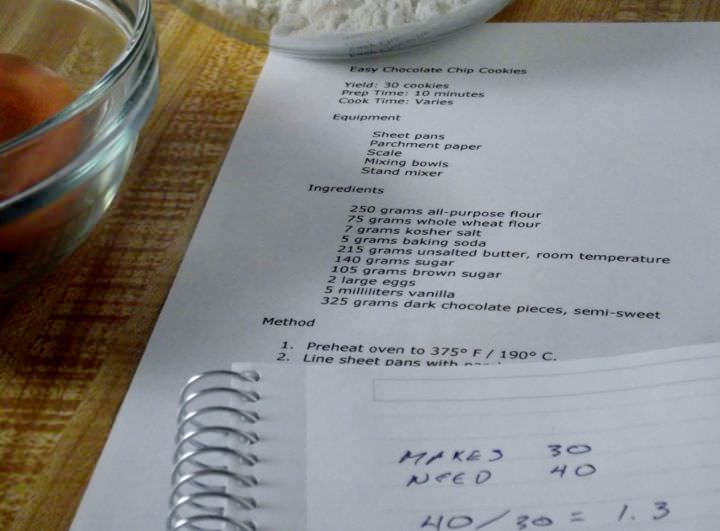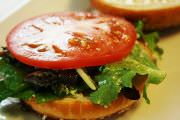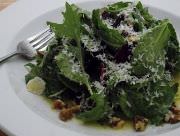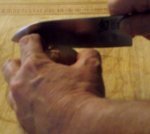Recipe Conversion - Scaling A Recipe

What Is Scaling
Scaling is adjusting a recipe to serve precisely the number of people you need and no more. Sometimes, it is just a matter of halving or doubling a recipe to hit your mark. Other times it can get complicated.
You have seven people coming over for dinner. Your recipe only serves five. Now what?
Do you double everything and eat leftovers? How about figuring out how to adjust that recipe so that it serves seven?
The easiest way to adjust the ingredient quantities for a different number of portions is to determine what its conversion factor is.
Recipe Conversion Factor
You can get the recipe conversion factor by dividing the desired number of servings by the original number of servings. You don’t have to be a math whiz to do it. It is simply:
desired number of servings
------------------------------ = conversion factor
original number of servings
For example, let's say a recipe for soup makes 8 servings. You want to make the recipe for 6 people. In this example our desired number of servings is 6 and our original number of servings is 8. So 6 divided by 8, or 6 / 8 equals .75. So, our conversion factor is .75. Now we just multiply our ingredients by .75 to get the new amounts.
More examples
You have a recipe that serves 5 people, the original number of servings, that you want to adjust to serve 6 people, desired number of servings. You just divide 6 by 5. Dividing 6 by 5 gives you 1.2. So, your conversion factor is 1.2. Simply multiply each ingredient by 1.2 to get the exact amount for the recipe.
Unintended Results
Scaling a recipe can result in amounts of ingredients that are difficult to measure, particularly when scaling down. If you end up with 1/16th of a teaspoon or 1/2 a gram or 2.7 ounces of something you can round off or estimate, most recipes don’t require that degree of precision.
However, taking a recipe from 6 servings to, say 200 servings, or conversely from 200 to 6 servings, requires a different approach because things tend to go wrong when increasing the size of a recipe by more than 3 or 4 times the original recipe. This is particularly true with cakes.
Caution Here
While doubling a recipe is an easy conversion, it doesn't always work for all of the ingredients, this is especially true with liquor, spices and seasonings, cream of tartar, baking powder, and baking soda. These types of ingredients have a strong influence on recipes and can have unintentional affects on the final product. If you double a recipe first try it with 1.5 times the amount for these ingredients.
Other Ways To Scale Recipes
If you own a bread baking cookbook it may contain a section on scaling recipes. Bakers use a different approach based on the percentage of ingredients in a recipe. It is based on determining the 100% ingredient in a recipe and calculating all the other ingredients based off that 100% ingredient.




